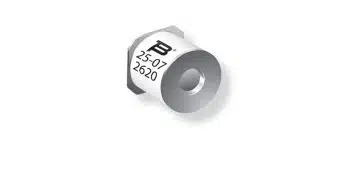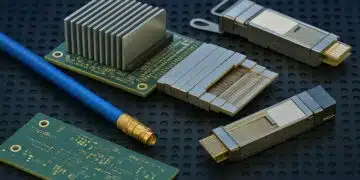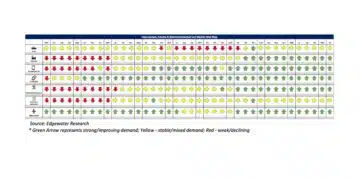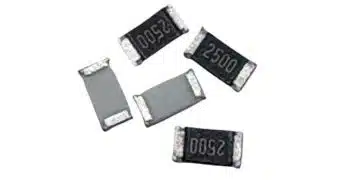source: AVX news
The series delivers 39x increase in capacitance compared to 100V, 1812 MIL-PRF-123 & -55681 MLCCs — enabling revolutionary board space, weight, & component count reductions that directly translate into lower launch costs — & meets extremely stringent DLA requirements for high-reliability performance.
FOUNTAIN INN, S.C. (February 16, 2018) – AVX Corporation, a leading manufacturer and supplier of advanced electronic components and interconnect, sensor, control, and antenna solutions, is the first — and currently only — company to offer space-level, X7R base metal electrode (BME) MLCCs with “M” and “T” reliability levels approved to the Defense Logistics Agency’s (DLA’s) MIL-PRF-32535 specification. Exhibiting high CV capabilities superior to those of precious metal electrode (PME) MLCCs, which have long been the standard for the global aerospace industry, AVX’s leading-edge, space-level, X7R BME MLCCs deliver a 39-fold increase in capacitance compared to standard, 100V, 1812, MIL-PRF-123 and MIL-PRF-55681 MLCCs — enabling revolutionary board space, weight, and component count reductions that directly translate into lower launch costs — and meet extremely stringent DLA requirements for high-reliability performance in space applications. The series also features AVX’s patented FLEXITERM® termination technology, which allows for more board flexure than standard terminations, providing proven-effective protection against thermal and mechanical stresses both during assembly and throughout component lifetimes and enabling the safe, reliable employment of large case sizes.
The series is tested to the DLA’s MIL-PRF-32535 specifications, and is currently available in seven case sizes spanning 0402–2220 and rated for 16–100V and 2.2nF–22μF. Ideal applications for the series include I/O filtering and bulk storage in the switch mode power supplies (SMPS) within space and satellite communications and launchers, military aircraft, and defense, weapons, and radar systems.
“Achieving MIL-PRF-32535 approval from the DLA for our innovative X7R BME MLCCs underscores our unwavering support for the space electronics industry, expands upon our existing space heritage, and makes AVX the only capacitor manufacturer — the whole world over — to offer X7R BME technology approved by NASA (S-311-P-838), the European Space Agency (ESCC 3009/041), and now the Defense Logistics Agency (MIL-PRF-32535),” said Michael Conway, product marketing manager at AVX. “AVX has been actively honing and perfecting its BME MLCC technology since the 1990s and now offers an array of tried-and-tested, high-reliability, high-CV solutions. Our MIL-PRF-32535 X7R BME MLCCs feature high-capacitance packages that deliver significant PCB space and weight savings, which are especially critical in the space industry. For example, customers can downsize from an existing CDR34/1812 case size to a M3253504/0805 case size and still achieve a 100V, 56nF rating.”
The series ships with standard high-reliability lead-times, and each production lot comes with the appropriate data package for M and T reliability levels, with A and B subgroups as required.
































